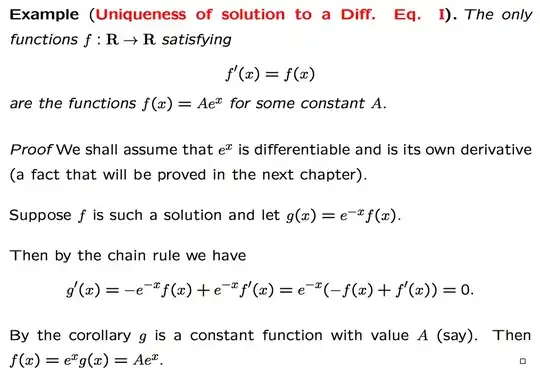This is a lecture slide from one of my analysis lectures.
It uses the Mean Value Theorem to show that the only solutions to the particular differential equation are of the form given.
My question is, how does he know they are the only solutions? They are certainly solutions, but how has he proved that there is not another function that has this property?
